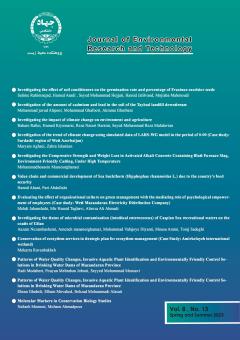-
-
-
Open Access Article
1 - Cheese whey recycling, the right approach to prevent environmental damage
Zahra Katabehei Moradi Maryam Haghighi khomami Hamed Kioumarsi hooshang dehghanzadeh saeed tamadoni jahromiToday, with increasing in production and diversity expansion of dairy products in factories and production of whey products, this food product has become very important. Whey is a water-soluble part of milk that is obtained by adding acid, heating, and coagulating the c MoreToday, with increasing in production and diversity expansion of dairy products in factories and production of whey products, this food product has become very important. Whey is a water-soluble part of milk that is obtained by adding acid, heating, and coagulating the cheese. This yellow liquid contains a lot of lactose and mineral compounds such as calcium and phosphorus, which is important to achieve in order to use as a food source and prevent environmental pollution. Since the wastewaters of the dairy industry have the highest levels of contamination, if the untreated wastewaters of this industry are discharged, serious environmental problems will be inevitable. On the other hand, a reduction in existing reserves and environmental problems followed by increasing use of fossil fuels has prompted researchers to produce new sources of renewable energy, and it can be said that new biological technologies, such as the use of whey as a way to produce biofuels, reduces the environmental problems of dischrging this kind of wastewaters into nature. Today, using biological technology, these compounds can be used to produce biofuels such as hydrogen, methane, and ethanol. So far, various methods and tests have been performed to produce these fuel sources and in this study, the effective strategies for recycling whey and preventing environmental damages are investigated. Manuscript profile
List of Articles
-
The rights to this website are owned by the Raimag Press Management System.
Copyright © 2017-2024


